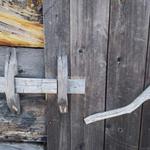Building Legitimacy: A comparative analysis of the Canadian and Norwegian Truth and Reconciliation Commissions
The United States is about to undertake a national investigation into hundreds of American Indian boarding schools that through much of the 19th and 20th centuries aimed to “kill the Indian to save the man.” Similar investigations have over the past decade been conducted by fact-finding commissions – called truth commissions – in Australia, Canada, Greenland, and the Nordic countries. Establishing truth commissions in developed Western democracies to examine historical wrongs committed against Indigenous groups and minority populations is a (relatively) new trend in the transitional-justice field. Presumably, these truth commissions must secure legitimacy not only among the groups affected by historical wrongs but also among the majority population if proposed reforms, and thus reconciliation, are to be effectful. But how is such legitimacy secured? Using a combination of desk study, media analysis, and primary data, this paper undertakes a careful comparative analysis of the Canadian and Norwegian truth and reconciliation commissions. We show that these two commissions have sought to build legitimacy essentially through three strategies: the design of their mandates, their choice of commissioners, and the publicity of their fact-finding processes. Assessed on these three dimensions, the Canadian TRC comes across as the most “successful” of the two.
https://www.mpsanet.org/conference/



